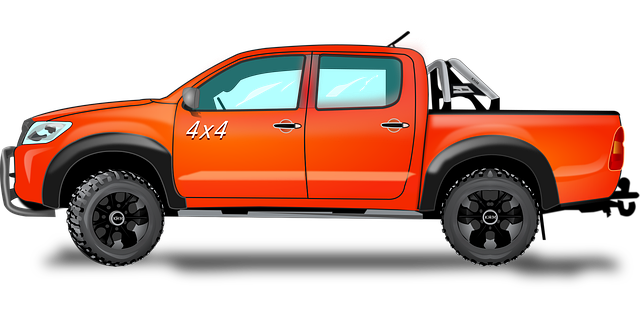Brake pads, vital for your vehicle's braking system, require regular replacement at McAllen-4×4-Shop to maintain optimal efficiency and prevent damage. The shop recommends scheduling replacements based on driving habits and terrain, offering three pad types (organic, semi-metallic, ceramic) for enhanced safety and performance, whether off-road or in city streets.
Your vehicle’s brakes are a critical safety feature. Understanding brake pads – their function, types, and wear patterns – is essential for optimal performance and safety. This article explores what brake pads do, the different materials they’re made from, how to choose the right ones for your MCALLEN 4×4, maintenance tips, and when to replace them. Learn how to ensure your MCALLEN-4×4 shop fits the perfect pads for your driving style, vehicle weight, terrain, and budget, prolonging their life and enhancing your off-road experience.
- Understanding Brake Pads: The Essential Component
- – What are brake pads and their function in a vehicle?
- – Types of brake pads: organic, semi-metallic, and ceramic.
Understanding Brake Pads: The Essential Component

Brake pads are a critical component in any vehicle’s braking system. Found within the calipers, these pads press against the rotor to slow and stop the rotation of wheels, enabling effective and safe control over speed and direction. At MCALLEN-4×4-SHOP, we understand that brake pads play an essential role in ensuring optimal performance and safety on any terrain or road condition.
Regularly replacing brake pads is crucial for maintaining braking efficiency and preventing wear and tear on other parts of the system. Our team recommends scheduling pad replacements based on driving habits and vehicle use, emphasizing the importance of timely maintenance to avoid sudden failures that could compromise safety. By prioritizing brake pad health, drivers can confidently navigate various conditions, from rough off-road trails to congested city streets.
– What are brake pads and their function in a vehicle?

Brake pads are critical automotive components that play a vital role in ensuring safe and effective braking. They are part of a vehicle’s brake system, working in conjunction with brake rotors to slow down or stop the car when the driver applies pressure on the brakes. At the McAllen-4×4-Shop, we understand the importance of top-quality brake pads for optimal performance and safety.
When you press the brake pedal, the pad presses against the rotor, creating friction that reduces the vehicle’s speed. Over time, these pads wear down due to constant use, making them a consumable part that requires regular replacement. Choosing the right brake pads is essential to maintain control over your vehicle, especially in challenging driving conditions.
– Types of brake pads: organic, semi-metallic, and ceramic.

Brake pads are a critical component in any vehicle’s braking system. They come in three main types: organic, semi-metallic, and ceramic. Each type offers distinct advantages tailored to various driving conditions and preferences, making them a key consideration for drivers at MCALLEN-4×4-SHOP. Organic pads, often found on lighter vehicles, offer excellent stopping power and reduced noise levels but may wear down faster due to their softer composition. Semi-metallic pads balance performance and durability, making them suitable for daily driving and off-road adventures alike. Ceramic pads stand out for their low dust and noise emission characteristics, ideal for those who prioritize cleanliness and quiet operation. Choosing the right brake pad type at MCALLEN-4×4-SHOP ensures optimal braking performance, extended pad life, and enhanced safety on the road.
When choosing brake pads for your vehicle, consider the unique needs of your driving style and road conditions. Visit McAllen-4×4-Shop to explore our range of organic, semi-metallic, and ceramic pads, each offering different performance characteristics. By selecting the right pads, you can ensure improved braking efficiency, extended pad life, and enhanced safety for a smoother ride ahead.



